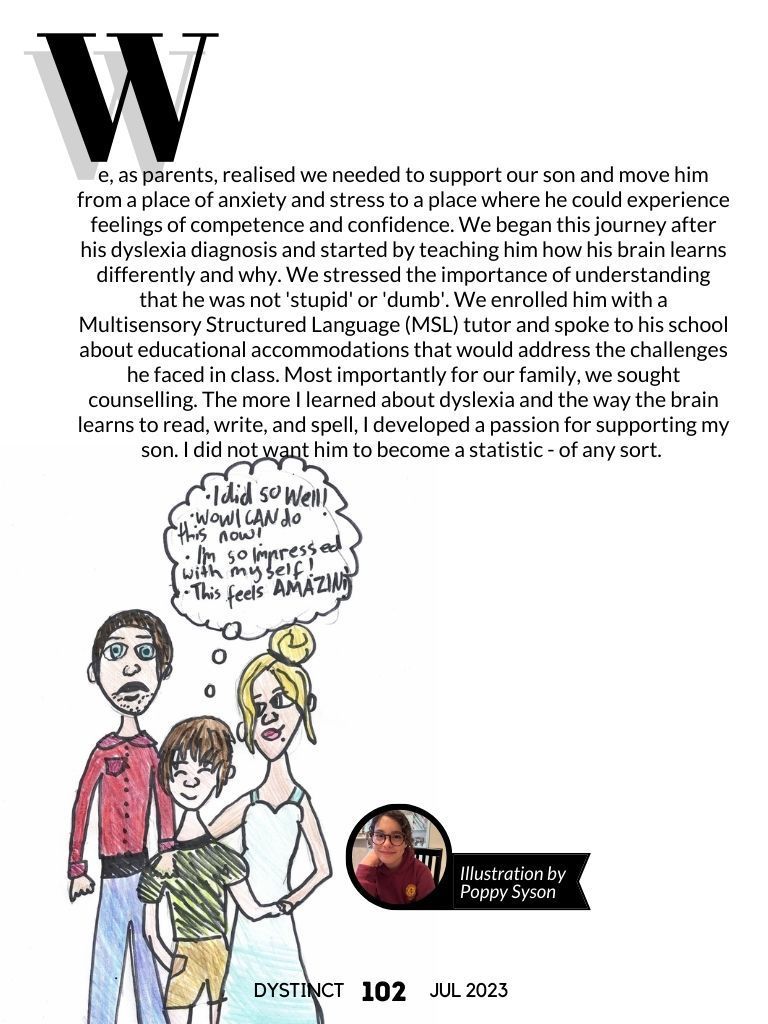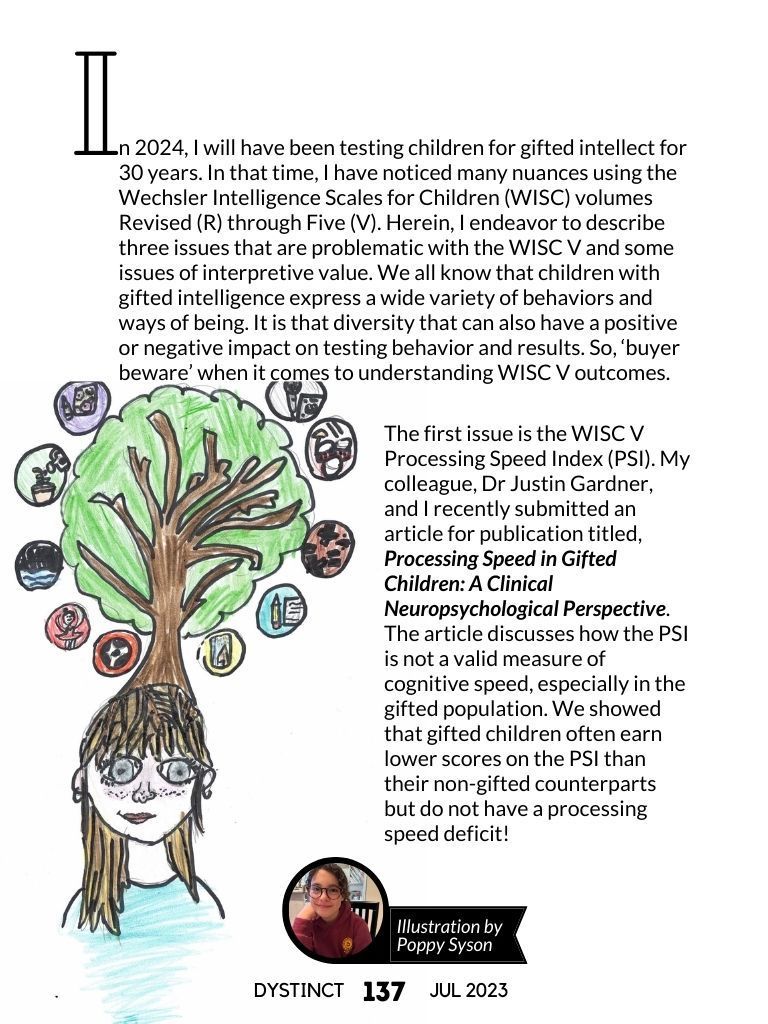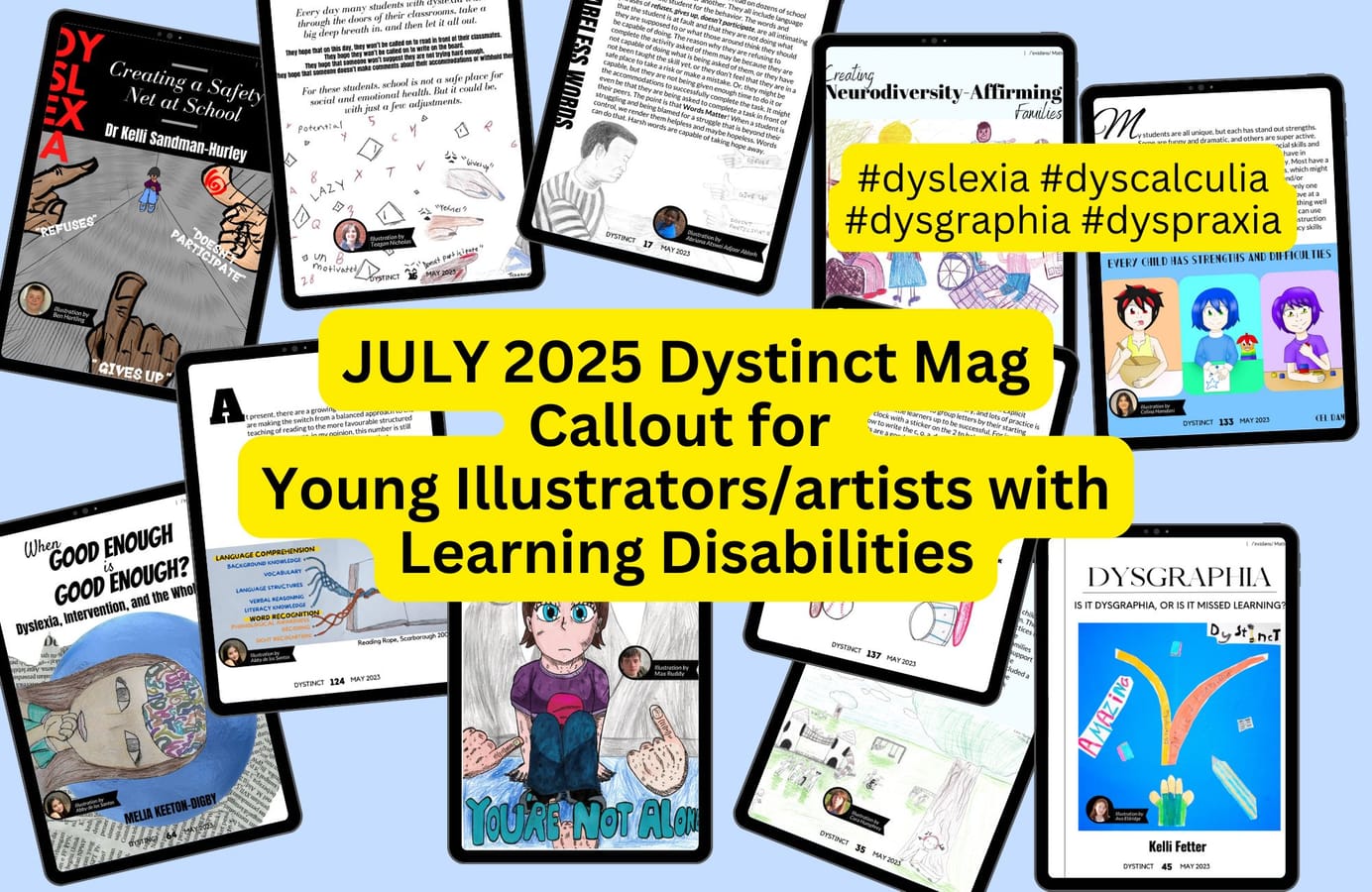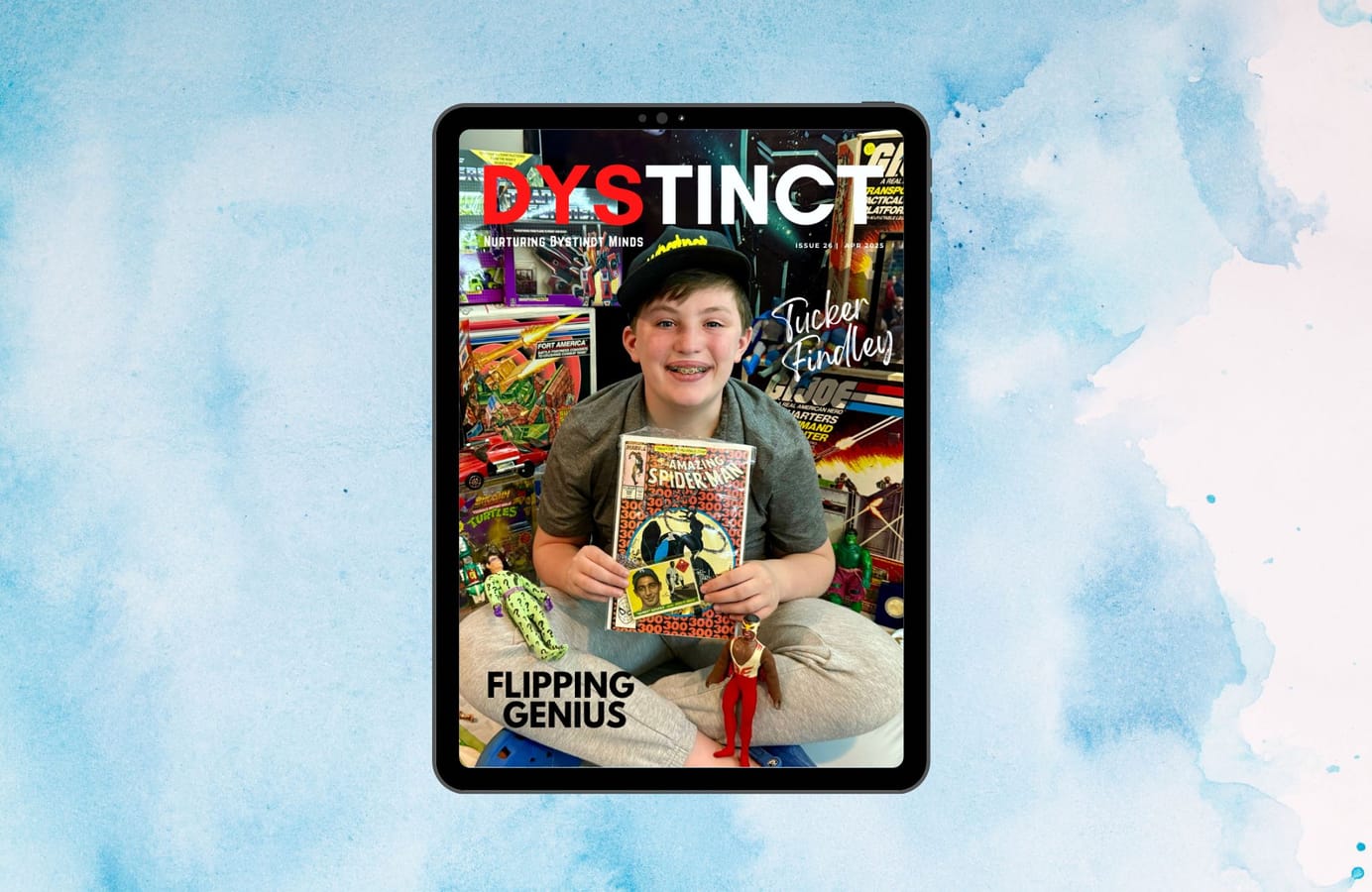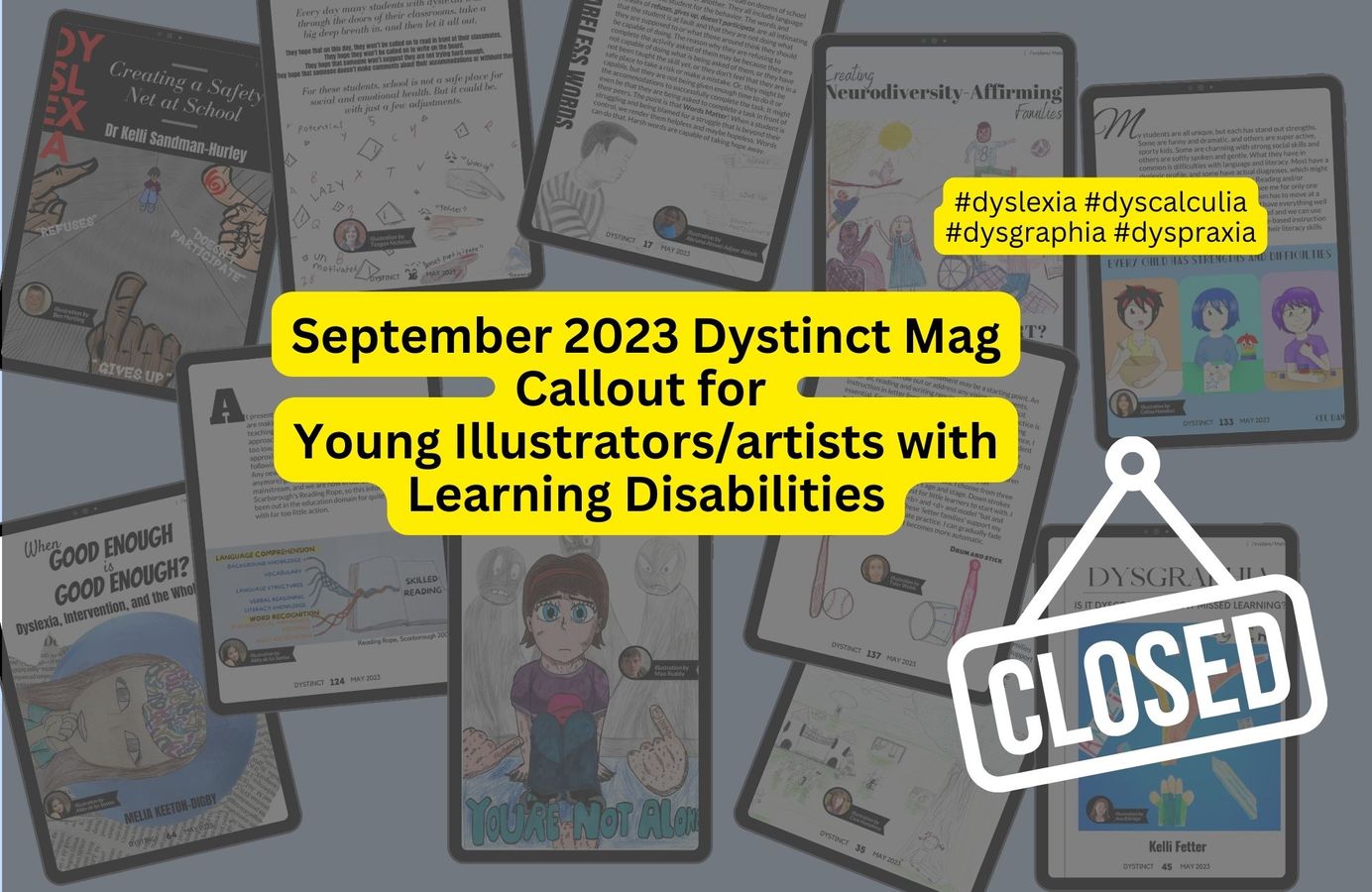
Issue 17: Illustration Callout for September 2023 Dystinct Magazine
In every magazine issue, articles written by specialists are accompanied by illustrations created by children. Check out the list of open available opportunities now and submit your child's illustrations for a chance to be featured in the Dystinct Magazine.
Table of Contents
Callouts for illustrations to be featured in the upcoming September 2023 issue of the Dystinct Magazine
Instructions to submit the illustrations are at the bottom. If you have any questions, please get in touch with me at hello@dystinct.org.
Callout 1 - Teacher and students engaged in a spelling activity
- Article Topic: Morphemic Spelling Activity
- Article Context: This article demonstrates an engaging spelling activity incorporating Structured Word Inquiry (SWI) to empower students to understand the morphological structure of words, recognise word families, and effectively apply suffixing conventions, resulting in enhanced spelling and language proficiency.
Illustration Guideline:
- Create an illustration of a teacher standing in front of a class of students who are actively engaged in working on their small whiteboards. On the large whiteboard behind her, the teacher has written the following text:
helper
helped
helps
helping
unhelpful
Callout 2 - Nurturing a love of words
- Article Topic: Vocabulary Instruction for Learners with Language-Based Learning Disabilities
- Article Context: The article provides practical strategies to foster word consciousness, igniting children's interest and love for words, which ultimately enhances their listening, reading comprehension, and writing skills.
Illustration Guideline:
Children can feel free to create an illustration as per their creativity.
If you require ideas children can create an illustration to the theme of one of the options below:
- (a) Word Garden: Illustrate a garden filled with various plants, where each plant represents a word with a different meaning. This symbolizes the idea of nurturing words and watching them grow in children's vocabulary.
- (b) Vocabulary Superheroes: Illustrate children dressed as superheroes with capes that have words written on them, like "brilliant," "courage," and "adventure." This showcases the power of words and how they can empower children in their reading and writing journey.
- (c) Dictionaries at Work: Draw children using dictionaries to find meanings of words, with speech bubbles showing their excitement when they discover new words. This highlights the importance of using dictionaries for word learning.
- (d) Word Rockets: Illustrate rockets flying into the sky, and each rocket has a different word written on it. This symbolizes the idea of vocabulary taking children to new heights in their language skills.
- (e) Word Detective: Draw a child dressed as a detective, holding a magnifying glass, and searching for hidden words in a storybook. This can represent the strategy of using context clues to figure out word meanings.
Callout 3 - Teaching children the language code
- Article Topic: Dyslexia-Inclusive Education: Comprehending the linguistic code
- Article Context: The author underlines the importance of understanding the linguistic code in English and French and advocates pattern-based instruction, incorporating interactive methods for improved decoding and encoding skills.
Illustration Guideline:
Children can feel free to create an illustration as per their creativity.
If you require a guideline, you can can create an illustration to the theme of one of the options below:
- (a) Puzzle: Children could draw a puzzle piece with letters and symbols that represent different language components like phonology, morphology, syntax, etc., fitting together to create a complete picture of understanding.
- (b) Word Menagerie: Depict a colourful zoo with animals made up of letters and sounds, symbolizing the diverse words created by combining letters and their sounds.
- (c) Book Universe: Show a universe where stars and planets are replaced by letters and words, emphasizing the idea of decoding the text and exploring the vast world of language.
- (d) Language Map Adventure: Create a treasure map with different landmarks representing phonology, phonetics, syntax, etc. Children can draw themselves on an exciting journey to uncover the language treasure.
Callout 4 - Inclusive classroom practices
- Article Topic: Is Guided Reading inclusive?
- Article Context: The author critically examines the inclusivity of common literacy practices like Guided Reading and Levelled Readers and emphasizes the importance of whole-class differentiation, equitable instruction, and a more comprehensive understanding of literacy instruction to truly foster inclusive education.
Illustration Guideline:
Children can feel free to create an illustration as per their creativity.
If you require a guideline, you can create an illustration to the theme of one of the options below:
- a) Inclusive Classroom Scene: Children could draw a classroom scene with diverse students working together, showing that everyone is valued and respected, regardless of differences.
- b) Barrier Removal: Illustrate a group of students working together to break down a barrier symbolizing inclusivity challenges, with tools like books and pencils.
- c) Breaking Achievement Gaps: Illustrate a bridge being built over a gap, symbolizing efforts to bridge achievement gaps through inclusive literacy practices.
- d) Teacher's Toolkit: Depict a teacher's handbag filled with strategies like scaffolding, differentiation, and diverse materials, emphasizing their role in creating an inclusive classroom.
Callout 5 theme - Dyslexia and anxiety are interconnected
- Article Topic: Decoding Dyslexia's Impact on Anxiety at Home and School
- Article Context: The article delves into the connection between dyslexia and anxiety, examining their impact in home and school environments and shedding light on strategies to address these challenges for individuals affected by both.
Illustration Guideline:
Children can feel free to create an illustration as per their creativity.
INSTRUCTIONS
Instructions for creating illustrations:
- If your child can create digital drawings, that would be preferred. If not, illustrations on paper will suffice. (If your child can create a digital illustration please let me know about the software/platform that they will be using to create the file).
- Please create/draw/colour on an A4 sheet of WHITE paper.
- Scan the image and send us a clear image of the illustration without shadows. Please do not take a photograph using flash on your mobile device.
Instructions for submitting your illustrations:
Please email me your submissions to hello@dystinct.org with the following info:
- Short bio- 25-50 words
- Name of Child
- Age
- Location (City/Country)
- Diagnosis/suspected diagnosis
- 1-2 high-resolution headshots/ photos of the child
Illustrations featured in previous issue of Dystinct Magazine
The below illustrations were featured in July 2023 Issue of Dystinct Mag




